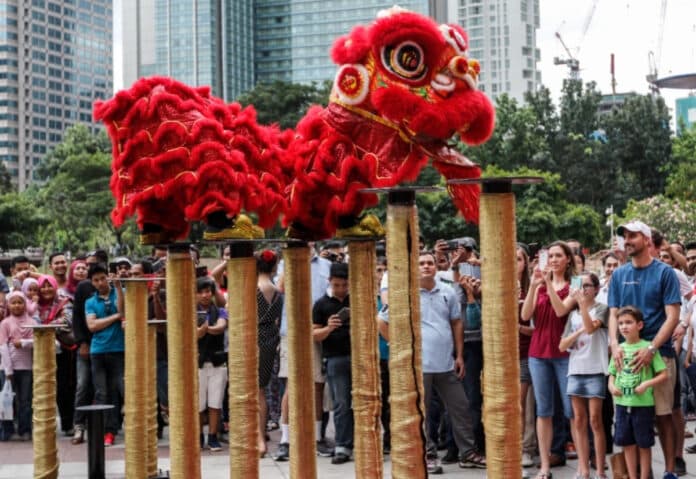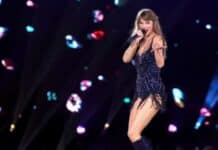
The lion dance is a thousand-year-old traditional Chinese dance.
Its original purpose was to protect people from malevolent spirits and attract good luck. Over time, the dance has transformed into an art form that captivates audiences with its vivid display. The dance features performers imitating a lion’s movements while wearing an ornate lion costume. The rhythmic sounds of drums, cymbals, and gongs enhance the energetic and mesmerizing atmosphere.
The lion dance, a time-honored Chinese dance, has changed throughout its thousand-year history. Its earliest purpose was to shield people from bad spirits and to bring good luck. As the years went by, the dance has progressed into a captivating art form. Performers adorned in intricate lion costumes imitate lions’ movement while accompanied by rhythmic drumming, cymbals, and gongs, producing a lively and hypnotic atmosphere.
The Evolution of Lion Dance in Modern Times
The lion dance has become popular in recent decades among the Chinese community and beyond. This includes renewed interest in cultural heritage, increased global visibility of Chinese culture, and adaptability to modern performance art.
While traditional elements of the lion dance, such as martial arts and acrobatic movements, have been preserved, modern dance styles and training methods have been incorporated to enhance the performance. This blending of old and new has made the lion dance more engaging and relevant to modern audiences.
Lion Dance and Cultural Preservation
The Chinese community deeply values the lion dance as a cultural tradition that connects them to their history and culture. It’s passed down through generations to keep it alive.
There’s a growing movement to preserve and promote the lion dance as a vital part of Chinese culture. UNESCO has recognized it as an intangible cultural heritage, increasing its global visibility and encouraging continued practice and preservation.
Lion Dance as a Form of Performance Art
From its ancient roots, the lion dance has transformed into a mesmerizing performance art that blends acrobatics, martial arts, music, and stunning costumes. Its appeal spans across various audiences.
As an art form, the lion dance has grown beyond tradition, with artists and choreographers experimenting with new styles and interpretations. Incorporating contemporary dance, theater, and multimedia, modern lion dance productions are innovative, unique, and push traditional boundaries.
The Role of Lion Dance in Festivals and Celebrations
The LED lion dance in Singapore is a staple in Chinese celebrations, including Chinese New Year, Mid-Autumn Festival, and Lantern Festival. Its performances bring good luck, ward off evil spirits, and entertain the crowds.
Apart from traditional festivities, the lion dance is also performed at cultural events, community gatherings, and corporate functions. Its expanding role in modern society has helped maintain its popularity and relevance.
Lion Dance and Globalization: Spreading Culture Across Borders
The lion dance has gone global due to increased global connectivity and Chinese culture’s influence worldwide. Troupes can be found in many countries worldwide, from the United States and Canada to Europe and Australia.
Its worldwide presence promotes cultural exchange and understanding while symbolizing unity and inclusiveness. Performers from diverse backgrounds come together to learn and practice the art form. International lion dance competitions and workshops foster camaraderie among practitioners from different countries and help spread the dance worldwide.
Final Thoughts
The lion dance is a cultural tradition adapted well to modern times. Despite the challenges of globalization, the lion dance has remained relevant and captivating by incorporating contemporary elements while preserving its historical roots. This has allowed the tradition to thrive and maintain its place in Chinese culture.
One of the ways the lion dance has continued to prosper is through its role in cultural preservation. The tradition has been kept alive and passed on to future generations by passing down the art of lion dancing. This ensures that the cultural significance of the lion dance remains intact, even as society changes.
Another factor contributing to the lion dance’s success is its evolution as a performance art form. With its combination of dance, acrobatics, and music, the lion dance has become an increasingly popular form of entertainment. As a result, it has gained a wider audience and is now frequently performed at international festivals and celebrations. This has helped to spread the tradition further and make it even more popular around the world.









